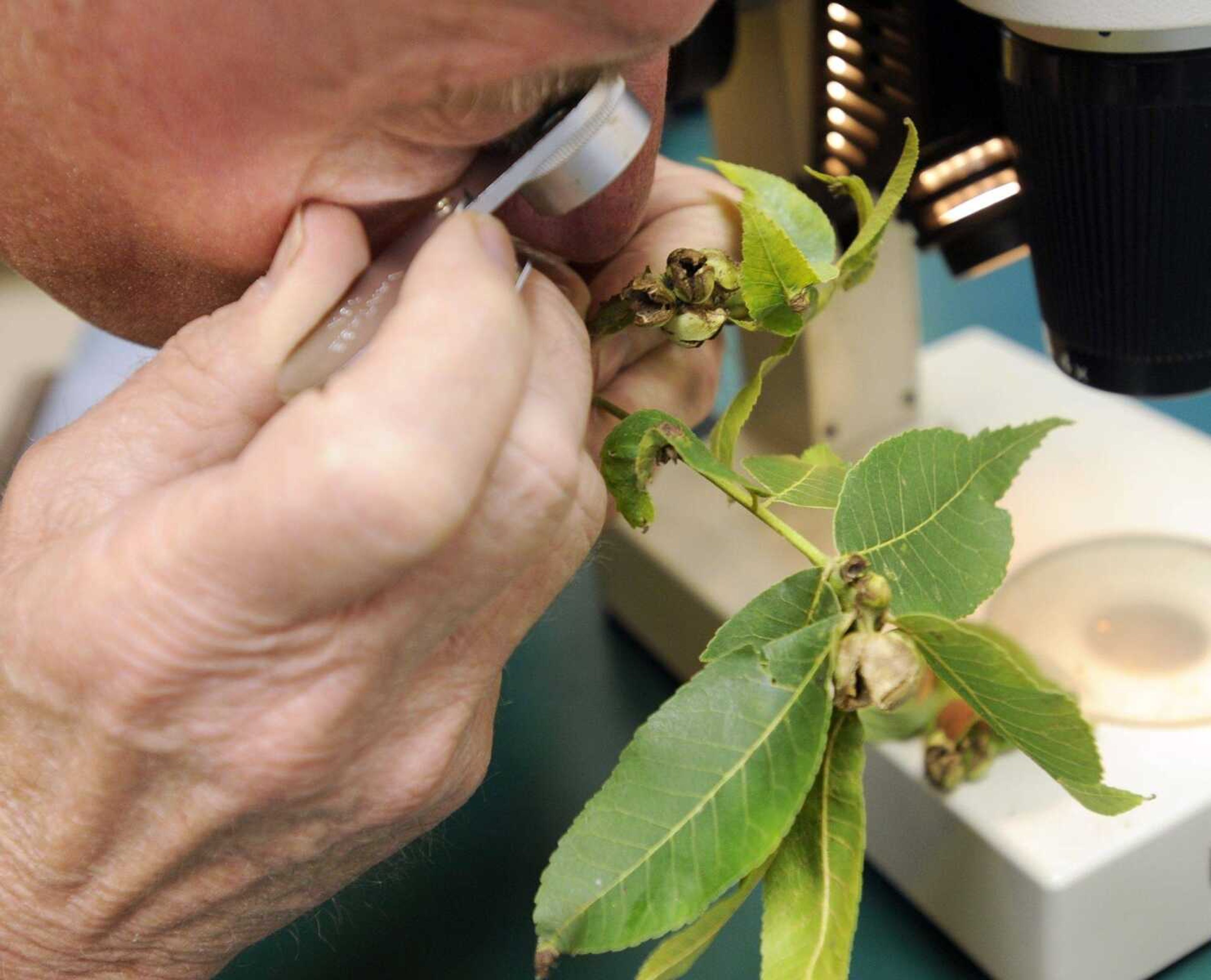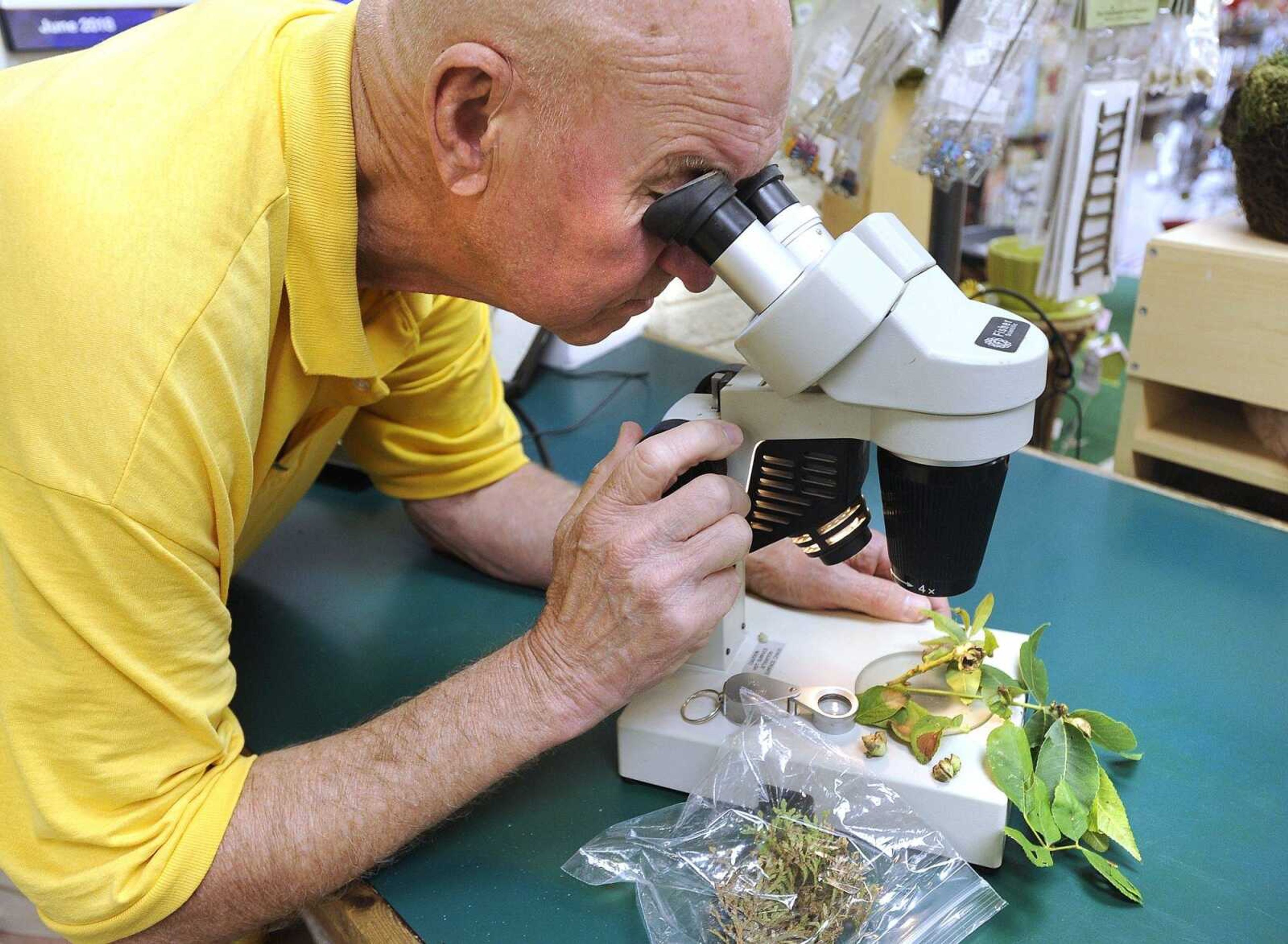By Paul Schnare
This has been an unusual gardening year. Or, it is a usual gardening year but we don't always remember how unusual other springs have been. So much for nonsense. I have been inundated with gardeners bringing me pictures of problems they are having with plants in their gardens, landscapes, and shrub beds. The usual pictures are brown spots on leaves, leaves that are wilting, branches that have lost all of their leaves, etc.
I have also had numerous calls about the plant problems gardeners are having. After some discussion, they say they are going to take a picture and bring it to me to look at for diagnosis. I will say a picture can be helpful, but the picture will not answer a lot of questions that need to be answered to diagnose a plant problem. If you have a plant problem place a sample of the leaf, twig, etc., into a zip-close plastic bag and take it to your local garden center.
On leaves I look for the presence of insects. If they are present they can be identified and the control suggested if needed. A picture will not always be clear enough to identify the species.
I also look to see if there is a dark line between the green of the leaf and the brown area of the leaf. This would be an indication that there is a disease affecting the plant leaf.

If there is no dark line between the brown and green area, more than likely the problem is not enough moisture or too much soil moisture. I usually ask the gardener if they have been watering or not. I also keep in mind the amount of rainfall we have been having this spring. For plants to thrive they need moisture, but then they also need dry soil in between water applications, whether it be natural rainfall or the use of a garden hose.
If a leaf has been chewed on, signs of the presence of an insect of should be looked for. Generally one or more of the insects can be found. If it is found, then you can determine which pesticide to use to eliminate the problem. If you can't find the insect, then other possibilities such as wind damage, etc., could be the culprit.
I quite often am given a twig which has a large round growth on it. This could be the presence of a gall. This particular problem is caused by an insect. Control of this problem is the use of a systemic insecticide applied to the soil in spring.
With all of this written, I again want to implore gardeners with gardening problems to collect samples of the problem, place them in a zip-close plastic bag and take them to a local garden center. Take pictures if you like, but the sample is the most helpful. Ask the experts there to identify the problem and to provide you with a solution if there is one.
The result is that your problem may not need a pesticide to be applied.
Connect with the Southeast Missourian Newsroom:
For corrections to this story or other insights for the editor, click here. To submit a letter to the editor, click here. To learn about the Southeast Missourian’s AI Policy, click here.










